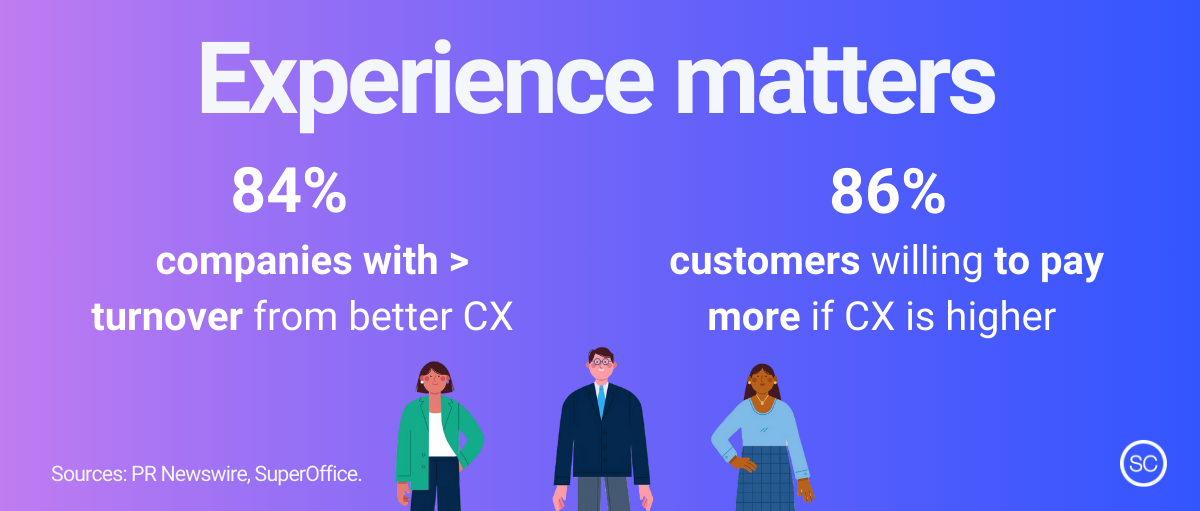
PXM software: quick and comprehensive guide

Here and there you have heard about PXM software and want to know more about what PXM means, an acronym that stands for Product eXperience Management, a term also used to define a type of software.
Well, you’ve come to the right place! At the end of this article you will find out everything (or almost everything) you need to know about PXM tools: what kind of software it is, what it is for, who uses it, what benefits it offers.
PXM: what does Product eXperience Management mean?
What is PXM? The acronym PXM Product eXperience Management is used to refer to the process by which a company manages the customer’s Web experience on the channels where it sells its products.
It is an aspect firmly connected to CX (customer experience) and, by extension, to business.

The main objective of the PXM approach
The main task of the PXM approach is to provide customers and potential customers with consistent, engaging, and personalized product Web experiences.
If the previous sentence should seem ambitious and generic to you, it is normal.
Delivering a prestigious Customer Experience is a desire that is easy to hatch but not easy to materialize.
So what?
Where do you start to elevate the Product Experience?
There are really so many factors at stake: from the quality of the product (or service) to the responsiveness of the web pages, through the timeliness of logistics and the friendliness of customer service.
Without detracting from the aspects mentioned above, however, there is one that is particularly important because of its constant presence along the Customer Journey, the journey that leads a user to become a customer.
It is the wealth of data and assets that describe and represent the corporate assortment.
The key role of product information and media in PXM
The successful completion of a Google search, zooming in on an e-commerce product in detail, comparing an item with competing items in a marketplace, and playing guide tutorials for use or assembly.
Different activities, alternating along the online purchase path, united by the constant presence of information, shots and videos that promote, describe and narrate the products, which are essential for the customer to know and understand their value.
Not surprisingly, in 70 percent of cases, product content is considered crucial to e-shopping (Forbes).
Moreover, inaccurate data and assets, in addition to reducing the chances of selling a product, are the second most frequent cause of returns (30 percent), preceded only by returns from damaged items (39 percent).
Towards PXM software, beyond Excel sheets and silos of DAM and PIM software
However, the need for instantaneousness of various digital channels, especially in realities with sizable volume assortments, requires significant manual efforts that are often synonymous with errors and inconsistencies.
An alternative to Excel sheets and hours of copy-pasting is to rely on ad hoc software to manage product information (the PIMs, Product Information Management) and others to manage digital assets such as photos and videos (the DAMs, Digital Asset Management).
While good allies for product experience, choosing two separate tools elevates the risk of duplicate content, as well as inflating integration and licensing costs.
Compare PIM, DAM and PXM tools: read our article PIM vs PXM vs DAM.
Why does PXM = DAM + PIM?
Product eXperience Management (or more simply PXM) software complements-and often exceeds-the functionality of DAM and PIM software, with the goal of governing product information and content from a single platform.
The convergence of information assets provided by PXM software ensures IT cost savings and elevates process agility because it centralizes end-to-end flows of creation, post-production, enrichment and approval of product card and catalog content.

How PXM software works
Mainly, a PXM software supports three types of macro-flows:
- centralizes.
Integrating with systems such as ERPs, a PXM platform collects all product master data, eliminating the risk of information fragmentation and cutting down search time.
Moreover, through ad hoc configurable rules, it can transform them automatically;
- manages.
A PXM solution allows different teams to plan activities and collaborate from a single tool.
It also fluidizes key processes such as data enrichment and translation as well as media review and approval;
- delivers.
PXM softwares support the product content supply chain up to the last mile, i.e., when all the components of a product sheet are ready, enabling-through APIs or integrations-the publishing of content to various enterprise channels.
Who needs a PXM software
There are many business figures that benefit from the introduction of PXM software.
Primarily E-Commerce and Digital Managers, who can rely on a constant and consistent automated flow of data and product media to websites, e-commerce, marketplaces.
Moving up the content production chain, a PXM software is a valuable shared space for specialized figures such as copywriters, translators, photographers, and post-producers, who in the platform-as well as working-can request feedback and collaborate with colleagues.
In addition, Marketers and Sales also benefit from a PXM, which serves as a repository and center for sharing information, shots, product videos, but also brand and institutional videos.
What benefits does a PXM platform provide
Managing product data and media assets with a Product eXperience Management solution offers a variety of benefits.
From a customer experience point of view, a PXM feeds real-time catalogs and product sheets with up-to-date data and quality media distributed at peak performance, fostering a satisfying browsing and shopping experience.
Satisfaction also spreads among teams, who with PXM software can automate redundant manual tasks and always be in control of what and how the brand is communicating in any web channel, having the ability to make timely updates or changes.
Finally, automation and control also shorten Time to Market, averting delays in campaigns and launches, guaranteeing business performance, emphasized moreover by reduced IT costs.
Articles like this one. Via e-mail. Once a month.
If you have read this far, you have probably found this article helpful. We appreciate it.
Sign up for our newsletter-you will receive it spam-free once a month.
All you have to do is enter your name and business e-mail address. Easy, right?